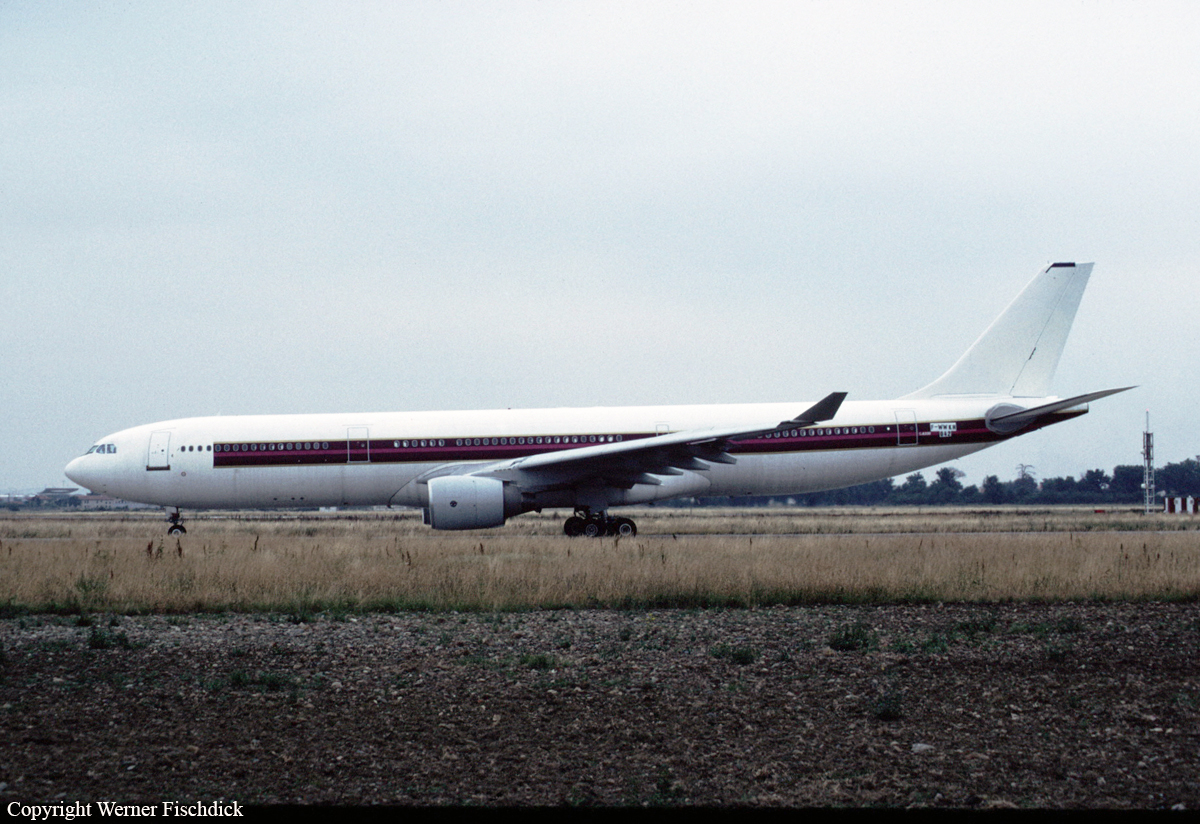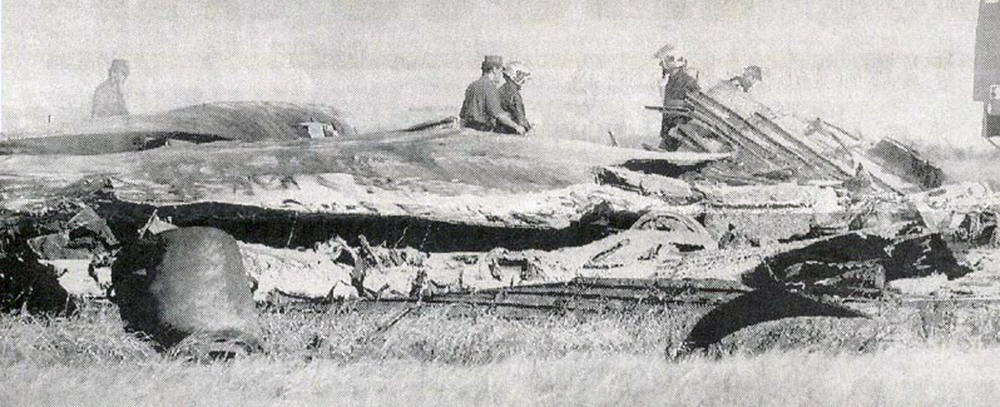Country
Operator Image

Ground accident of an Airbus A340-642X in Toulouse
Date & Time:
Nov 15, 2007 at 1710 LT
Registration:
F-WWCJ
Survivors:
Yes
MSN:
856
YOM:
2007
Crew on board:
9
Crew fatalities:
Pax fatalities:
Other fatalities:
Total fatalities:
0
Aircraft flight hours:
24
Circumstances:
The aircraft registered F-WWCJ was tested at a fixed point at Toulouse-Blagnac Airport. The current mission consisted of various test' systems with airline technicians who had ordered the plane. It unfolded engines in operation without chocks wheel. At the end of these tests, after having stopped and inspected the engines, the technicians restarted them for a new fixed point at high power, to find the source of oil seeps. About three minutes after power-up, the aircraft began to moving forward. The technician in the left seat noticed the movement and informed the test technician in the right seat. The latter acted on the brakes located rudder pedals then released the parking brake. The DFDR then shows a release of the brake command with the rudder bar. As the plane continues to advance, he tried to deviate from his course using the steering wheel. The nose gear quickly got in the way as the plane accelerated. The plane struck an inclined blast wall. Its front part broke and flipped over to the other side. Thirteen seconds elapsed between the start of the aircraft's movement and the shock with the wall. The aircraft was destroyed and all nine occupants were injured, four seriously.
Probable cause:
The accident was due to completion without chocks and on all four engines at the same time of a test during which the thrust was close to the capacity of the parking brake. The lack of a system for detecting and correcting drifts while carrying ground tests, in a context of industrial pressure and permanent sales force, encouraged a test to be carried out outside of the established procedures. The surprise led the ground test technician to focus on the brakes; therefore, he did not think of reducing the engines thrust.
Final Report:

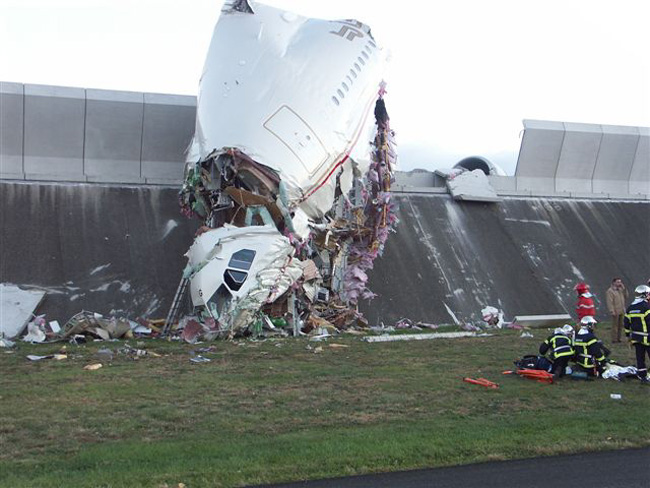
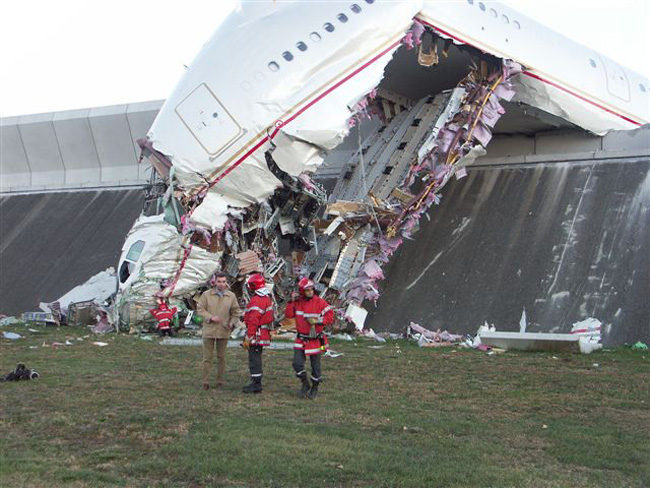
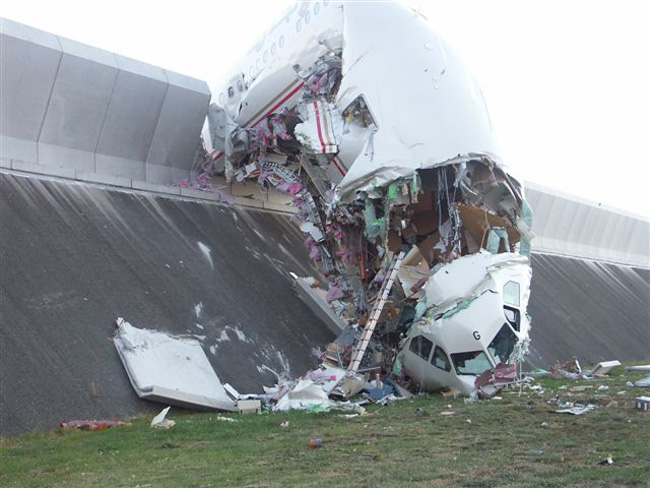
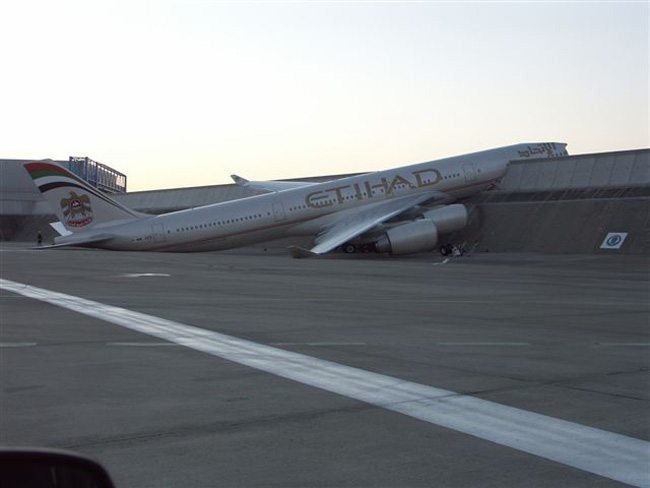
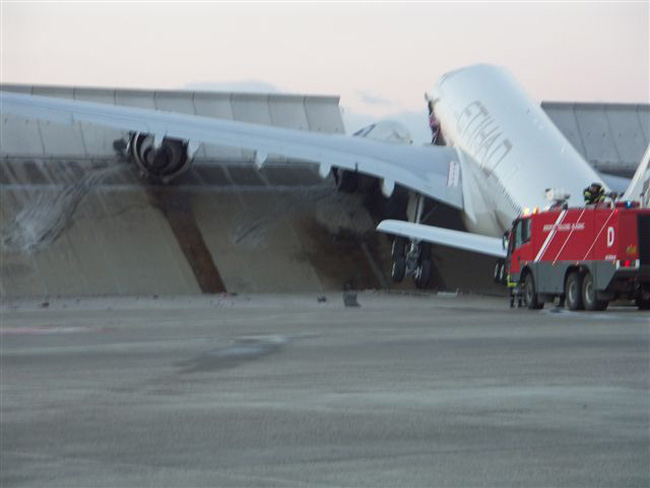

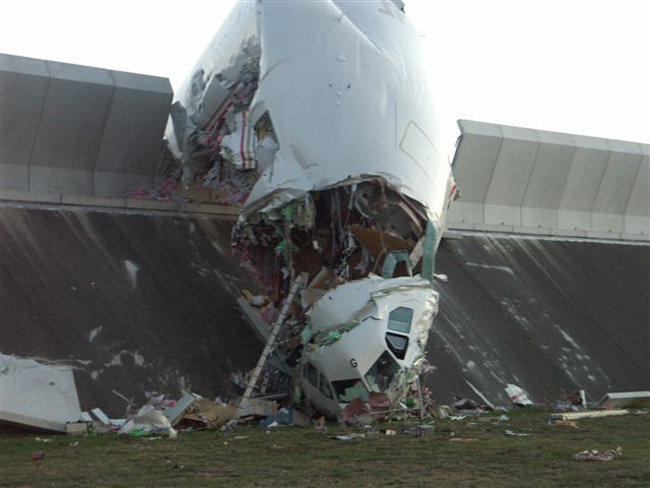
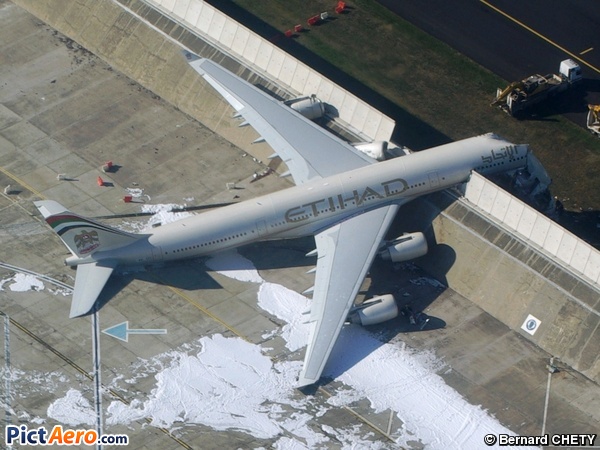
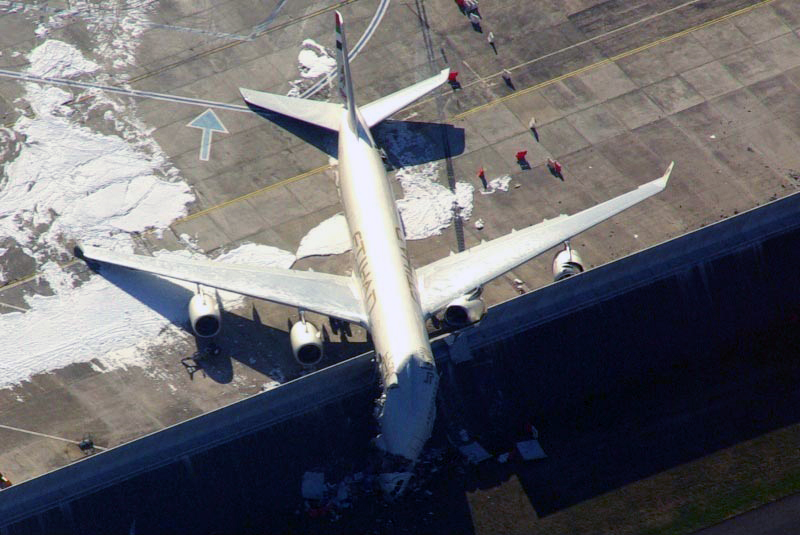


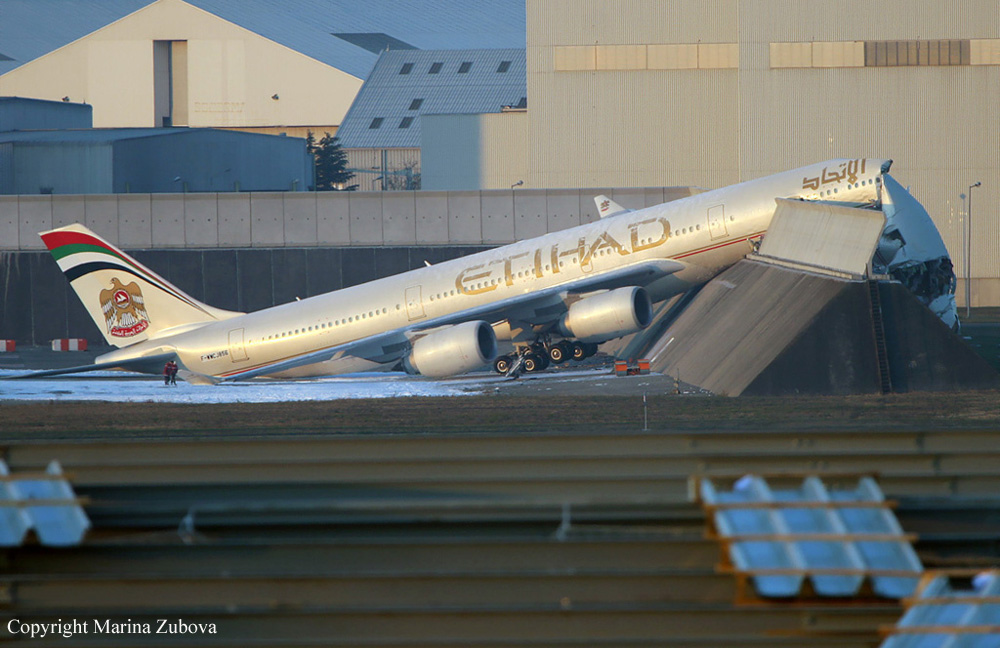
Crash of an Airbus A330-321 in Toulouse: 7 killed
Date & Time:
Jun 30, 1994 at 1741 LT
Registration:
F-WWKH
Survivors:
No
Schedule:
Toulouse - Toulouse
MSN:
42
YOM:
1993
Flight number:
BGA129
Crew on board:
7
Crew fatalities:
Pax on board:
0
Pax fatalities:
Other fatalities:
Total fatalities:
7
Captain / Total hours on type:
345.00
Copilot / Total hours on type:
137
Aircraft flight hours:
360
Circumstances:
An Airbus A330-300 aircraft crashed during a test flight at the Toulouse-Blagnac Airport in France, killing all seven on board. The test flight was part of the preparation required to certify the autopilot, on this Airbus A330 equipped with Pratt and Whitney engines, to category III standards. The first part of the test flight was completed successfully when the aircraft landed on runway 15L. A 180 degree turn was made for takeoff from runway 33R. The second takeoff was to be performed under conditions similar to those of the first takeoff. For this test however, the autopilot would incorporate the modification under study. The takeoff was performed by the co-pilot with TOGA (Takeoff Go Around) power instead of Flex 49, a lower power setting which was specified in the test procedure. Rotation was positive and pitch input was stopped when the attitude changed from 12 to 18 degrees nose-up. Within 5 seconds after takeoff several attempts to engage the autopilot were unsuccessful. After it was engaged, activation was delayed by two seconds because the first officer was exerting a slight nose down input on the side stick. The aircraft, still trimmed at 2.2 degrees nose-up, pitched up to reach 29 degrees and the speed had decreased to 145 knots. The captain meanwhile reduced thrust on the no. 1 engine to idle and cut off the hydraulic system in accordance with the flight test order. Immediately after it activated, the autopilot switched to altitude acquisition mode. The altitude had been set at 2000 feet on the previous flight phase. This caused the pitch attitude to increase to 32 degrees in an attempt to reach 2000 feet. The speed decreased further to 100 knots, whereas the minimum control speed is 118 kts. Roll control was lost and the captain reduced no. 2 engine thrust to idle to recover symmetry on the roll axis. Bank and pitch attitudes had reached 112 degrees left and -43 degrees resp. before the pilot managed to regain control. It was however too late to avoid ground impact at a pitch attitude of around -15 degrees.
Probable cause:
At the present stage of its work, the commission estimates that the accident can be explained by a combination of several factors none of which, taken separately, would have led to an accident.
The initial causes are primarily related to the type of the test and its execution by the crew during the last takeoff:
1) choice of maximum power (TOGA) instead of Flex 49;
2) very aft CG for the last takeoff;
3) trim set in the takeoff range, but in too high a nose-up position;
4) selected altitude of 2000 feet;
5) imprecise and late definition of the test to be conducted and the tasks to be performed by the captain and first officer, respectively;
6) positive and very rapid rotation executed by the first officer;
7) the captain was busy with the test operations to be performed immediately after take off (engagement of the autopilot, reduce thrust on the engine and cut off the blue hydraulic system) which temporarily placed him outside the control loop;
8) in addition the absence of pitch attitude protection in the autopilot altitude acquisition mode played a significant role.
The following factors also contributed to the accident:
1) The inability of the crew to identify the mode in which the autopilot was placed;
2) the confidence of the crew in the expected reactions of the aircraft;
3) the late reaction from the flight test engineer when faced with a potentially hazardous change in parameters (speed in particular);
4) the time taken by the captain to react to an abnormal situation.
The initial causes are primarily related to the type of the test and its execution by the crew during the last takeoff:
1) choice of maximum power (TOGA) instead of Flex 49;
2) very aft CG for the last takeoff;
3) trim set in the takeoff range, but in too high a nose-up position;
4) selected altitude of 2000 feet;
5) imprecise and late definition of the test to be conducted and the tasks to be performed by the captain and first officer, respectively;
6) positive and very rapid rotation executed by the first officer;
7) the captain was busy with the test operations to be performed immediately after take off (engagement of the autopilot, reduce thrust on the engine and cut off the blue hydraulic system) which temporarily placed him outside the control loop;
8) in addition the absence of pitch attitude protection in the autopilot altitude acquisition mode played a significant role.
The following factors also contributed to the accident:
1) The inability of the crew to identify the mode in which the autopilot was placed;
2) the confidence of the crew in the expected reactions of the aircraft;
3) the late reaction from the flight test engineer when faced with a potentially hazardous change in parameters (speed in particular);
4) the time taken by the captain to react to an abnormal situation.
